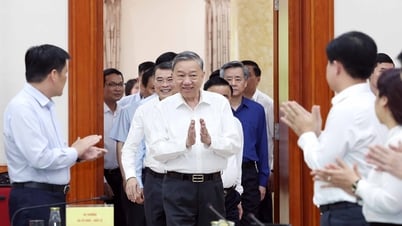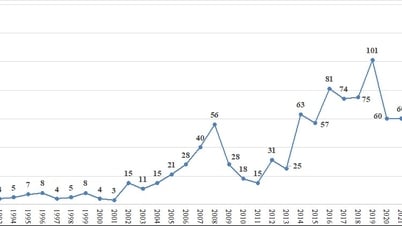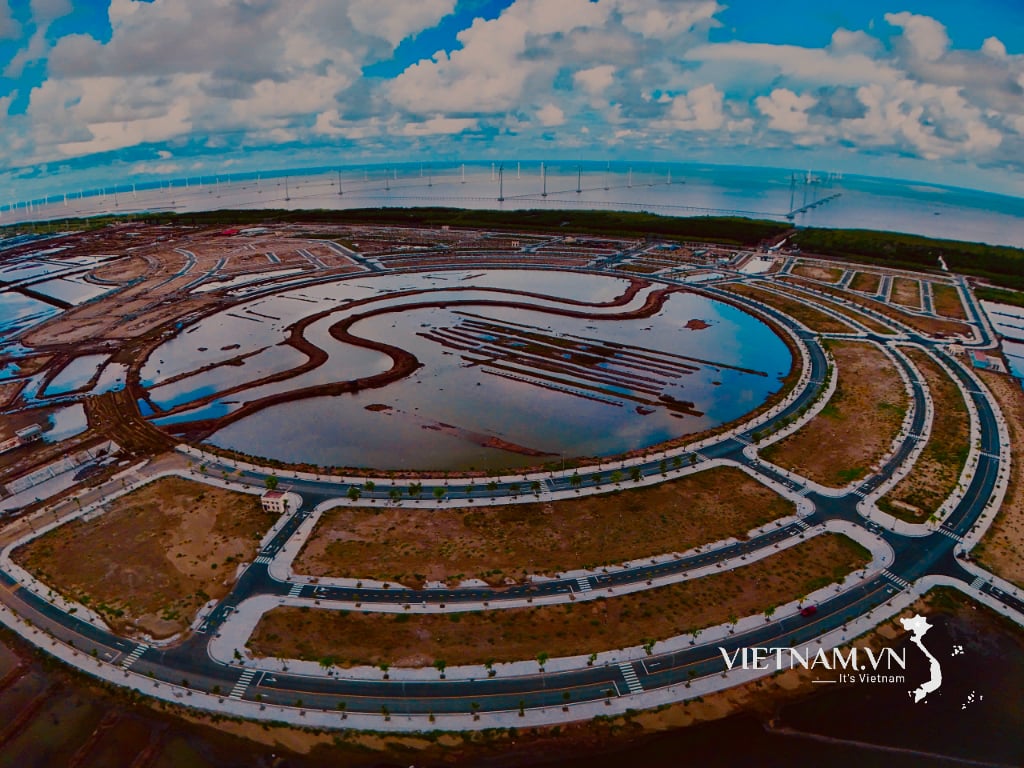In the project submitted by the Government , it is expected that from 10,035 commune-level administrative units, the implementation of the arrangement will reorganize the scale to only about 2,000; about 1/3 of the district's tasks will be transferred to the province, 2/3 will be transferred to the commune. How to arrange and reorganize commune-level administrative units to match the tasks is the issue being raised.
The commune-level administrative unit will be greatly expanded after the reorganization (In the photo: Quynh Doi village gate, Quynh Luu district, Nghe An province). Photo: Nhat Thanh.
When the district level is abolished, the two-level government will include the provincial level and the commune level (grassroots level). However, in reality, in the provinces there are still cities and towns directly under the province. When the district level is abolished, the reorganization of the commune level is receiving attention, because this is the level directly involved, solving the daily work of the people.
Regarding the issue of how to reorganize commune-level administrative units after the reorganization, Mr. Dao Ngoc Nghiem - Vice President of the Vietnam Urban Planning and Development Association said that in the future, the ward and commune levels will be the grassroots level. The important issue now is that from 10,035 commune-level administrative units after the reorganization, there will only be about 2,000 on the basis of scale, population, and area. Mr. Nghiem said that on the basis of that arrangement, power will be divided, because with the current number of communes, civil servants are dispersed, however, when the power is reorganized and centralized, it will be different.
Mr. Tran Ngoc Vinh - former Deputy Head of the National Assembly Delegation of Hai Phong City also noted that the merger must be suitable for the economic zone, where the administrative headquarters is located, and must be suitable for the national culture, and convenient for people to travel.
According to Mr. Vinh, with a two-level government, the commune level will be larger after the district level is abolished. The commune level is close to the people, but some rights belong to the district such as issuing land use right certificates, the commune has no rights. Not to mention when people register motorbikes, they have to go to the district. Therefore, when the district level is abolished, the commune level will need to immediately resolve issues related to the people. This is not only convenient for the people but also helps people to monitor better, people can immediately know how the officials operate.
Mr. Vinh assessed that when some functions of the district and provincial city were transferred to the commune level, even though they were called communes, they were actually like "small districts". At that time, the number of communes would be reduced, and the apparatus would be less cumbersome and fragmented. However, determining where to locate the administrative center is an important issue, choosing a location that is close and becomes an economic driving force there, and creating convenience and convenience for people to travel.
Mr. Vinh also said that merging communes is not related to amending the Constitution. It only requires a resolution from the National Assembly Standing Committee. Therefore, in parallel with the arrangement of provinces, it is possible to merge the organizations of communes first. The National Assembly will amend the Constitution to eliminate the district level and organize local governments at two levels. Previously, the whole country only had 30 or 31 provinces. By 1976, there were 38 provinces. Now there are 63 provinces and cities.
This model is not only in Vietnam but also in many countries around the world, including Japan and China. A commune that is like a “small district” will be effective. However, attention must be paid to the qualifications of commune-level officials. Because if we remove the district level, there will be too many people, and if we push it down to the commune level, we must select people with real qualifications.
Mr. Bui Van Xuyen - former Standing Member of the National Assembly's Law Committee (now the Law and Justice Committee) said that removing the district level and merging the communes is simple. However, it is necessary to consider the cities and towns of the province.
Mr. Xuyen said that city management is different from district-level management. District is an intermediate level, only transmitting policies and regimes, managing the state of land, population, and economy. As for provincial cities, there are many other issues. For example, the "city within a city" Thu Duc is also a unit equivalent to the district level, but it is a smart, modern urban area, managing infrastructure, urban areas, environment, and population. Therefore, if there are only 2 levels of government, the city and town directly under the province will be abolished, at that time there will only be the province and the commune level. Thus, the commune-level administrative unit at that time will be likened to a "small city" and the management method will be different from the big city under the province before. For example, if Thai Binh city is divided into 2 wards, it certainly cannot be equal to the old Thai Binh city.
“Therefore, we need to consider more in organizing activities at the grassroots level in the future. Not to mention, for provinces that merge, when 2 provinces merge into 1 province, the cities belonging to the province will no longer exist. Especially, the city of a province is also the economic, cultural and social center of that province” - Mr. Xuyen expressed and gave an example of the United States, where each state has cities and towns.
Recently, at the national scientific conference with the theme of Innovation in thinking about building and enforcing laws to meet the needs of national development in the new era, Associate Professor, Dr. To Van Hoa - Vice President of Hanoi Law University proposed that it is possible to study and amend in the direction of regulating Vietnam including administrative units and specialized administrative units. In which, administrative units have 2 levels: provincial level and grassroots or commune level. In the provincial level, there are provinces and centrally-run cities. At the grassroots level, there will be communes, cities, and towns under the province.
Source: https://daidoanket.vn/to-chuc-mo-hinh-hoat-dong-cap-xa-sau-sap-xep-10301690.html






































































































Comment (0)